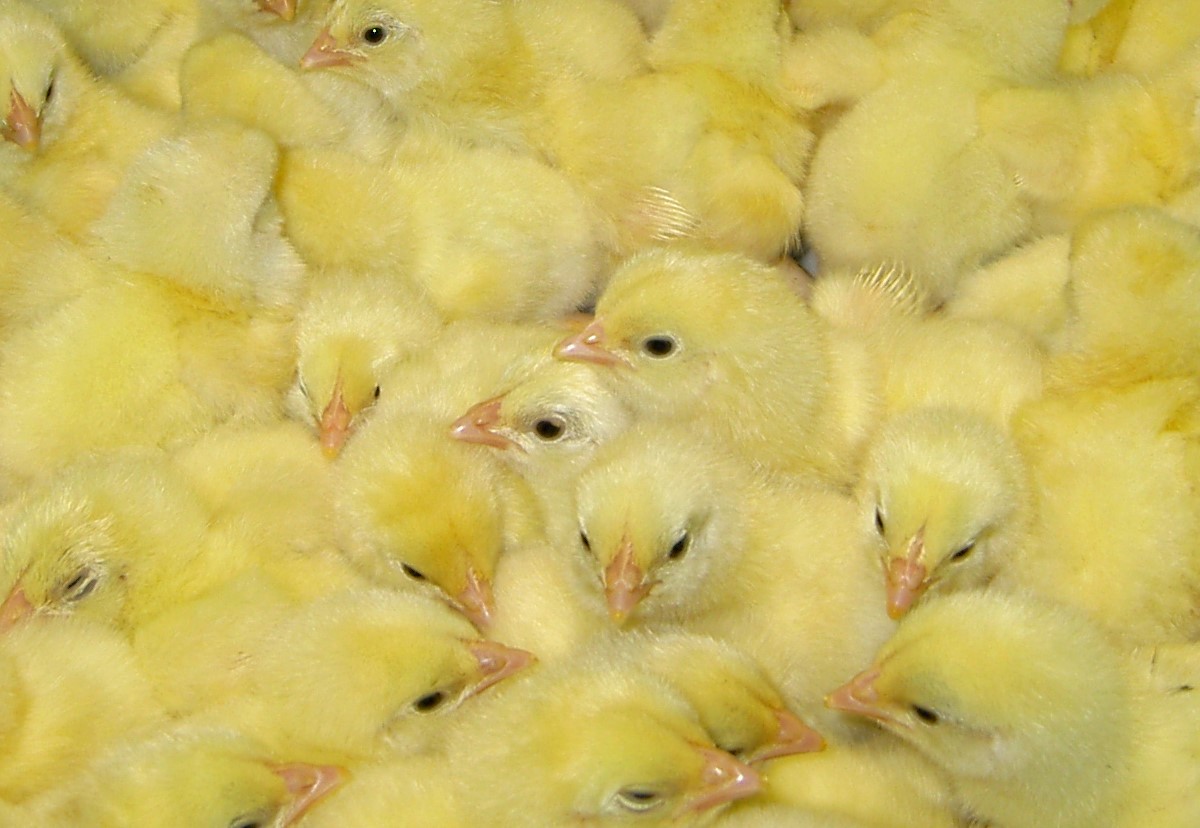It’s well established that good chick quality is a prerequisite for broilers to perform well throughout grow-out. Too often, however, poor chick quality goes unnoticed until excessive first-week mortality is reported. Fortunately, this is a scenario that can be avoided with careful attention to key factors that can impair chick health.
By Philip A. Stayer, DVM
Corporate Veterinarian, Sanderson Farms, Inc.
Laurel, MS, USA
We all know that healthy breeder flocks are more likely to produce healthy chicks. So, if the breeder flock is healthy but chick quality is poor or chick mortality is elevated, what’s the reason? In my experience, one common but often-overlooked cause is the way eggs are handled at the hen farm and hatchery.
A bacterial infection is usually at the root of poor chick quality and elevated chick mortality, but chicks rarely get infected at the farm — at least during the first week. The infection almost always starts at the hatchery.
As long as eggs are not delivered by Cesarean section, they will harbor bacteria, at least on the shell surface. Eggs that are allowed to sweat before hatch, that have a lot of feathers or are left in litter too long or on dirty floor mats can become contaminated with bacteria.
Problems at transfer
Another source of bacterial contamination — and a common one — occurs during transfer. This is usually due to improper sanitation of either transfer machines or hatcher trays. Transfer from setters to hatchers is more problematic nowadays because it often involves punching a hole in the shell for in ovo vaccine injection. Transfer machines touch every egg hatched in the hatchery and have been associated with poor chick quality if improperly maintained.
Antibiotics administered at transfer have been shown to improve flock livability because no hatchery-sanitation program is perfect. However, with mounting pressure to reduce or eliminate the use of antibiotics that are also needed in human medicine, many broiler operations have elected to discontinue using an antibiotic in the hatchery. Poor sanitation and other mis-management practices become more evident as untreated bacteria compromise egg quality and chick health.
Regardless of whether an antibiotic is used, there should be procedures in place to ensure that routine maintenance and sanitation of trays are up to par. When bacterial contamination is identified, transfer-equipment suppliers should also be intimately involved in resolving the problem. Animal-health companies provide support services that include evaluation of sanitation practices and preventive parts replacement.
Excessive time between transfer from setters to hatchers needs to be avoided. This delay may, in turn, delay embryonic development, leading to “green chicks” being placed before they are physically able to endure environmental stresses.
Clean hatcher trays are critical to good chick quality because they are the first surface touched by newly hatched, wet chicks. Most hatcheries realize there is benefit to using a disinfectant in the hatcher during the hatching process. Airflow, humidity control and temperature can either help or hurt chicks. A lot of organic matter is released when chicks hatch. In a warm, moist environment, it becomes an ideal incubator for all types of bacteria and fungi. If the water used to increase humidity is contaminated, chicks can become infected.
Chicks in peril
Injury to chicks just out of their shells is also a risk at the hatchery. If they’re kept in the hatcher too long, they will inevitably dehydrate to the point where they are unable to respond to any environment — good or bad — later in their short lives.
Great care must be given to gently moving thousands of chicks from hatchers to chick boxes. Broken equipment, especially plastic hatcher trays, can create more opportunities for injury. How many maimed chicks leave the hatchery depends on how employees handle them. Trauma can happen anywhere chicks are moved, especially with the automated equipment now found in most hatcheries.
De-stackers, separators, belts, slides and drops should be examined by every employee working around any of this equipment to ensure that chicks can’t get caught up, dropped or injured. As soon as any issue is found, someone needs to be responsible for taking the time to remedy the problem immediately.
Listen to the noise
Chick thriftiness can be compromised just before placement on farms. The room they’re in should not be too cool or too hot. Perhaps the easiest measure of chick comfort is to listen to the noise. If chicks are squalling, they’re probably too hot. If chicks are quiet and you only hear the sound of machines, they’re either too cold or, worse yet, dead! As in any nursery, there should be happy cooing sounds when young animals are comfortable.
As chicks are moved from the hatchery to the farm, transport must be gentle with appropriate environmental controls. Chicks should be placed — never thrown or dumped — as expediently as possible. Chicks can easily become chilled or overheated on the ride to the farm, which could hinder their ability to thrive. Although chickens are resilient animals, they don’t need to prove their hardiness at every point. Growers and service technicians should be present when chicks arrive at the farm to inspect their condition and sign-off on their quality.
Dehydration
Perhaps the most common problem identified in baby chicks is dehydration. Dehydration is typically easy to see: Chicks are smaller, and they have shriveled shanks, dark muscles and uric-acid deposits in ureters and other organs. Dehydration results because water is unavailable or because the chick doesn’t want to drink.
Inadequate water availability should be easy enough to remedy but is sometimes difficult to identify after the fact. On cold winter days, when full drinker lines may be turned off to pre-heat water, chicks may become dehydrated if the lines are left off too long.
Another issue can be worn-out nipples. Side-to-side action is critical for 3-inch-tall bitties, but problems may not be apparent even if a Lott stick shows ample water at each nipple. Water pressure may be too high or too low or drinkers can be too high — all of which short the flock of water. Most chicks that die of dehydration do so several days after placement, which can make it difficult to figure out if the problem was at the hatchery or the farm.
Another cause of dehydration is infection. Infected chicks are often large with full crops. Infection may be evident as “angry yolks” — that is, neovascularization of the distal yolk sac and surrounding organs, a change in yolk character (especially thickened), pericarditis, airsacculitis, hepatitis or even septic polyarthritis. Because infection can have multiple origins, there may be multiple manifestations in baby chicks. If a chick has signs of both infection and dehydration, it should be assumed that infection came first and that dehydration was a secondary problem.
Elevated first-week mortality
When excessive first-week mortality is reported, an on-farm investigation should be initiated. It starts with an evaluation of all the dead chicks picked up. Examination of just a few samples cannot be trusted; nobody wants to pick up, carry and look at decomposed carcasses, but examining too few could mean you miss the ones needed to make a correct diagnosis.
Dead chicks should be laid out in a cool and shady spot until necropsied, taking care not to let them touch one another. Chicks up to 2 weeks of age can be manually opened, then classified according to gross findings.
Typically, dead chicks can be grouped into three primary categories: dehydrated, infected and unknown. Unknown includes carcasses “too rotten to tell” or ”TRtT” for short. With normal chick mortality, about one-third of the dead will be in each of the three categories. I prefer to lay chicks out in rows, with one row for each category, in groups of five, much like a tally sheet. Once all the chicks are assessed, it’s easier and less messy to count dead in the stacks of five than it is to recount bodies.
Necropsy of dead chicks should continue until a pattern is established. For instance, if 100 dead chicks are picked up and 19 of the first 20 necropsied are obviously infected, then there is little reason to continue opening the remaining 80 chicks. Again, with normal mortality, the pattern will be even distribution (and relatively few chicks), so all dead chicks may need to be examined.
When chick quality and early mortality are problems, be sure to look at the big picture, not just problems within one house. Look for patterns of problems with the breeder flocks, the hatchery, the feed mill and so on. This larger picture is an example of epidemiology at work in the poultry industry. We have the benefit of large numbers to evaluate trends in short order. Once a pattern for elevated chick mortality is uncovered, it should be obvious that steps must be taken immediately to correct the problems.
High expectations
All this being said, thrifty broiler chicks should be expected hatch after hatch. At Sanderson Farms, our standard for first-week mortality is < 0.75% for every house placed. This number is achieved by paying attention to all aspects of chick quality, as well as to culling in the hatchery (0.2-0.5% culls).
If mortality exceeds 0.75% in a given house, then a detailed investigation is required for every house that’s above our standard. Once problems are identified, they must be corrected immediately. We consider excessive 7-day mortality to be unacceptable. With sufficient focus from all team members, it really is possible to have consistently good chick quality and very low early mortality.
Source: www.poultryhealthtoday.com










